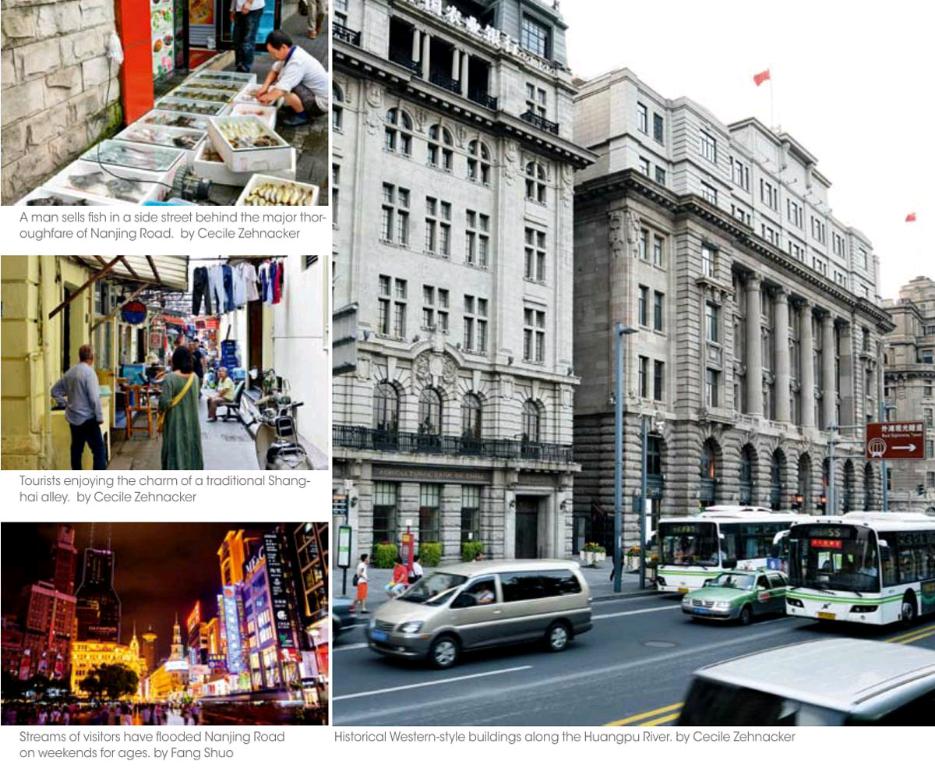Weekend in Shanghai
by+Cecile+Zehnacker

Shanghai, whose name literally means “above the sea,” is situated on the Huangpu River. In only a few decades, the one-of-a-kind city grew into one of the most recognized in the world with a stunning skyline and the second most populated of China after Chongqing. Over 23 million inhabitants share the diverse mega-settlement. Beyond its futuristic design, the city is also a kaleidoscope of culture and architecture, and a patchwork of influences rooted in its colorful history.
Of all the cities on the Chinese mainland, Shanghai has the heaviest colonial and multi cultural history. After the opening of the city to foreign powers in the 1840s, people from many countries immigrated and settled in Shanghai: mainly British, American, French, Russian and German. Each community erected structures hearkening to the architecture of their home countries, shaping districts with Western style. The affluence of these new residents injected the city with a festive feeling, especially after the 1920s. In the late 1980s and early 90s, China bet on Shanghai to open up to the world by introducing several reforms. The city responded by developing and expanding rapidly, gradually evolving into the city we know today.
Shanghai, the economic and financial capital of China, starkly contrasts the political and administrative capital of Beijing, which is the 3rd most populated city in China with more than 20 million inhabitants. While Beijing remains quite traditional in many aspects and preserves many old buildings and sites linked to the traditional history of Chinese dynasties, Shanghais character is shaped by its Western-inspired architecture. The ancient colonial buildings nicely complement traditional Chinese structures as well as modern skyscrapers.
A particularly fascinating aspect of Shanghai is the way some seemingly traditional areas have been consumed by modernity and innovation, like some parts of the ancient French concession that have become fashionable and artsy areas packed with fancy restaurants, cafes and shops, attracting well-off trendy youth. In the same spirit, the Bund and its beautiful old colonial buildings face the Pudong District on the opposite side of the Huangpu River, an area formerly featuring rice farmers houses, warehouses and shipyards, which has transformed into a business district with some of Chinas most impressive structures. At night, a cruise down the Huangpu River showcases the beautiful mix of tradition and modernity that makes the city so alluring. One side features skyscrapers composing the most memorable skyline in Asia, and on the other side are 19th Cen- tury neo-classical former European banks. To me, Shanghai feels like the New York City of the East, a big melting pot that has been cobbled together by all the different cultures that intertwined there, evidencing the countrys international importance.
One place I definitely enjoyed was Yu Garden. Although crowded, this traditional Chinese Garden was still a real treat. It was built back in 1559 by Pan Yunduan, who spent nearly 20 years arranging it to please his father, a top official of the Ming Dynasty. After being greatly damaged in the early 20th Century, it was rebuilt in the late 1950s and opened to the public in 1961.
However, veering away from the crowds along Nanjing Street towards
the unbeaten paths through the singular city was the best way to discover the real Shanghai, because doing so requires diving into traditional China. The back streets have preserved their traditional look and feel, with laundry hanging out windows on both sides of the street. The side streets also provide good opportunities to taste the local dishes at quaint restaurants. The most famous, xiao long bao, is also known as Shanghai dumplings. They are filled with meat and soup and dipped in ginger and vinegar before consumption. Be careful when eating or young tongue could get scalded by the hot soup! Several techniques aim to avoid this, but eating them can be a challenge for novices.

